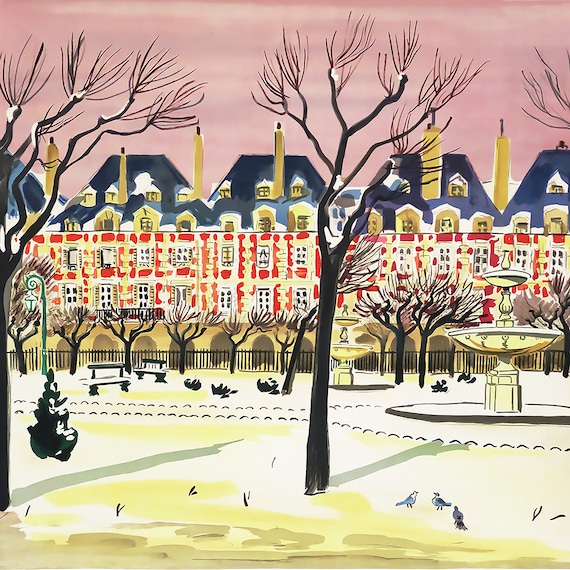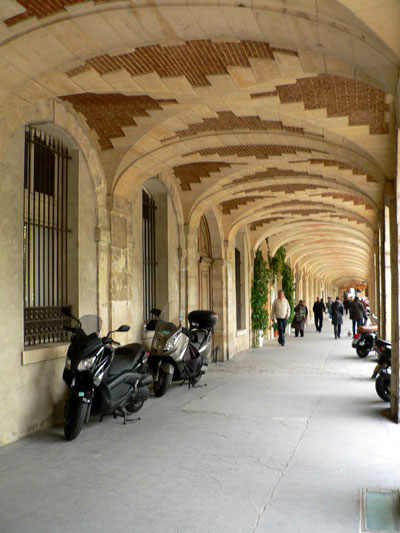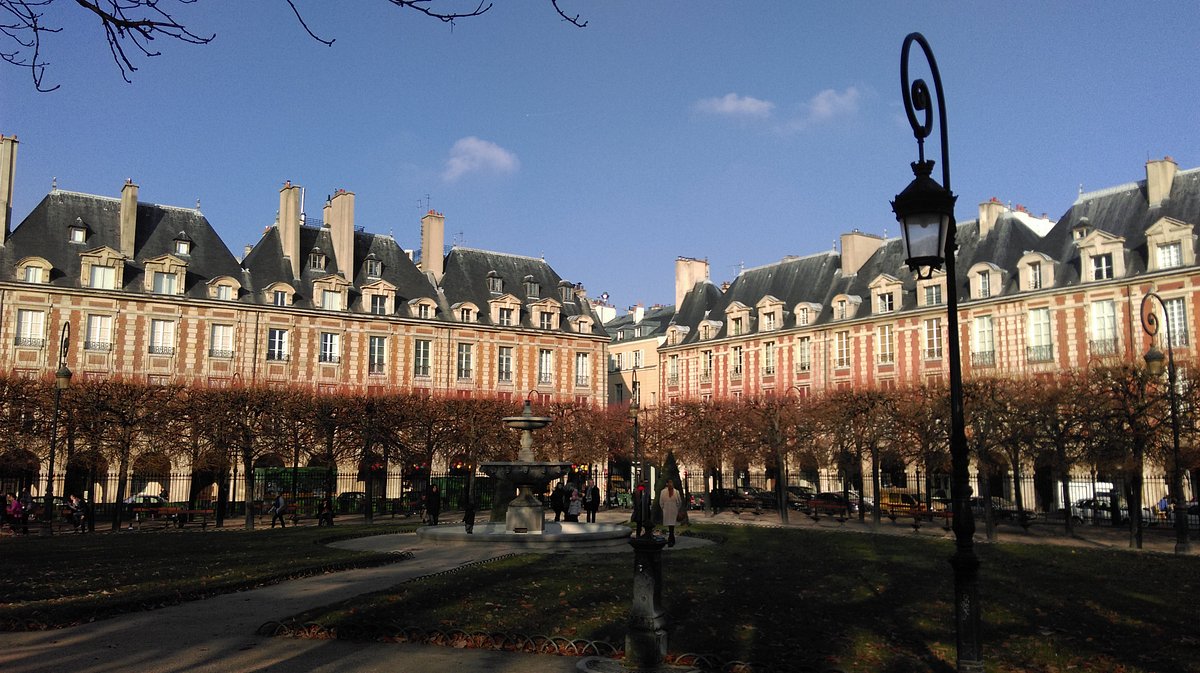A Full Guide to Place des Vosges Paris France
A Full Guide to Place des Vosges Paris France
Blog Article
A Comprehensive Guide to the Architectural Appeal of Place Des Vosges
Location Des Vosges, developed in the early 17th century, exemplifies the architectural class of its time, supplying an one-of-a-kind glance into the harmonious design concepts of the French Renaissance. The square's meticulously organized red-brick facades, punctuated by elegant rock describing, show a dedication to balance and aesthetic equilibrium that was innovative for its period. Considerable sites within this historical site not only enhance its aesthetic allure yet additionally improve its story. As we check out the intricate aspects that specify this renowned square, one must take into consideration the wider effects of its layout on city design.
Historical Background of Location Des Vosges

The square was developed as part of a more comprehensive campaign to enhance the city landscape of Paris, incorporating perfects of balance and order (place des vosges reviews). Finished in 1612, the square featured consistent façades, which were decorated with red brick and rock, creating a harmonious aesthetic that proceeds to affect metropolitan planning today
Throughout the centuries, Location Des Vosges has served various duties, from a royal house to a vibrant public space, adjusting to the changing social and political landscape of France. Its importance is further underscored by its organization with remarkable numbers, including the renowned author Victor Hugo, that lived there. Today, it stands as a valued historic website, personifying the rich story of Parisian building and cultural heritage.
Architectural Functions and Layout
Characterized by its in proportion design and natural building design, Place Des Vosges showcases an exceptional mix of Renaissance and timeless design elements. The square is framed by 36 similar red-brick homes embellished with rock information, creating a harmonious visual experience - place des vosges restaurants. Each frontage includes a collection of curved home windows and classy dormer home windows, adding to the general balance of the ensemble
The use of sharp arcs is a significant attribute, boosting the verticality of the buildings which is typical of the French Renaissance. Ground-level arcades supply a protected sidewalk, inviting visitors to leisurely walk while enjoying the architectural ins and outs. The roofings, characterized by high inclines and slate floor tiles, additionally highlight the harmony while allowing for reliable rain drainage.
Landscaping within the square likewise plays an essential role in its design, with manicured gardens and courses that resemble the geometric accuracy of the style. The main water fountain includes a centerpiece, complementing the serenity of the surrounding space. Jointly, these architectural functions not only reflect the looks of very early 17th-century France yet also highlight the enduring tradition of Area Des Vosges as an exemplary model of urban preparation and layout.
Significant Landmarks and Structures
Amidst the building elegance of Place Des Vosges, a number of significant spots and structures stand apart, each adding to the square's historic and social importance. The most popular of these is the Hôtel de Sully, an exquisite instance of 17th-century design, which now houses the Centre des Monuments Nationaux. Its grand façade and delicately created yard show the opulence of its era.

The square is additionally flanked by a collection of identical block and stone homes, identified by their unified percentages and sophisticated galleries. These structures not just offer a feeling of unity within the square however likewise serve as a window into the building practices of the moment.
Gardens and Eco-friendly Spaces
Snuggled within the vibrant environments of Place Des Vosges, gardens and environment-friendly areas provide a serene contrast to the square's building majesty. This historic square, known for its symmetrical design and rich background, is complemented by diligently preserved gardens that welcome both relaxation and reflection.

Benches tactically placed throughout the gardens encourage visitors to rest and absorb the serene setting. Seasonal flowers grow in lively shades, including a vibrant aspect to the views. Additionally, the interplay of light and darkness cast by the surrounding 17th-century structures creates a captivating environment, additional enriching the experience.
In this unified blend of nature and design, the yards of Place Des Vosges are not just an accessory to the square's beauty; they are an essential part of its charm, inviting all to stop briefly and enjoy the peaceful environment.
Site Visitor Details and Tips
Preparation a see to Location Des Vosges calls for thoughtful factor to consider to fully value its building grandeur and serene yards. Located in the heart of the Marais district, this historic square is quickly obtainable using public transport, with the closest city station being Bastille.
For an optimum experience, think about seeing throughout weekdays to prevent the weekend crowds. Morning or late afternoon visits supply the very best light for digital photography, boosting the elegance of the surrounding 17th-century design.
It is suggested to put on comfy shoes, as the cobblestone paths can be unequal. Furthermore, bringing a picnic is a wonderful method to delight in the rich plant; however, be mindful of maintaining the sanitation of the area.
While exploring, put in the time to value the square's special art galleries and boutiques. Toilets are limited, so plan accordingly.
Finally, do not miss out on the chance to see the Maison de Victor Hugo, situated at number 6, which offers understanding into the life of the famous author who resided there. With mindful preparation, your browse through to Place Des Vosges will certainly be an unforgettable expedition of Parisian heritage and tranquility.
Verdict
In summary, Place Des Vosges exemplifies the building majesty of very early 17th-century France, defined by its symmetrical layout and unified design. The square's rich historic importance is complemented by its significant landmarks, such as the Hôpital de Sully and Maison de Victor Hugo - place des vosges photos. The manicured yards and main fountain improve the square's visual appeal. As one of Paris's many identified sites, Place Des Vosges stays a vital item of the city's social and building heritage.
Location Des Vosges, developed in the very early 17th century, exhibits the architectural sophistication of its time, offering a distinct look into site the unified design concepts of the French Renaissance.Identified by its in proportion design and natural architectural design, Place Des Vosges showcases an exceptional blend of Renaissance and classic design elements. Jointly, these architectural functions not just show the aesthetics of early 17th-century France however additionally emphasize the sustaining legacy of Location Des Vosges as an exemplary design of metropolitan preparation and layout.
In the middle of the architectural natural beauty of Location Des Vosges, a number of noteworthy landmarks and buildings stand out, each contributing to the square's historic and social relevance.In summary, Area Des Vosges exhibits the architectural grandeur of very early 17th-century France, identified by its symmetrical layout and harmonious layout.
Please visit one of our local supporters - Mustang Carbon Rolls Royce Headlights
Report this page